
Articles
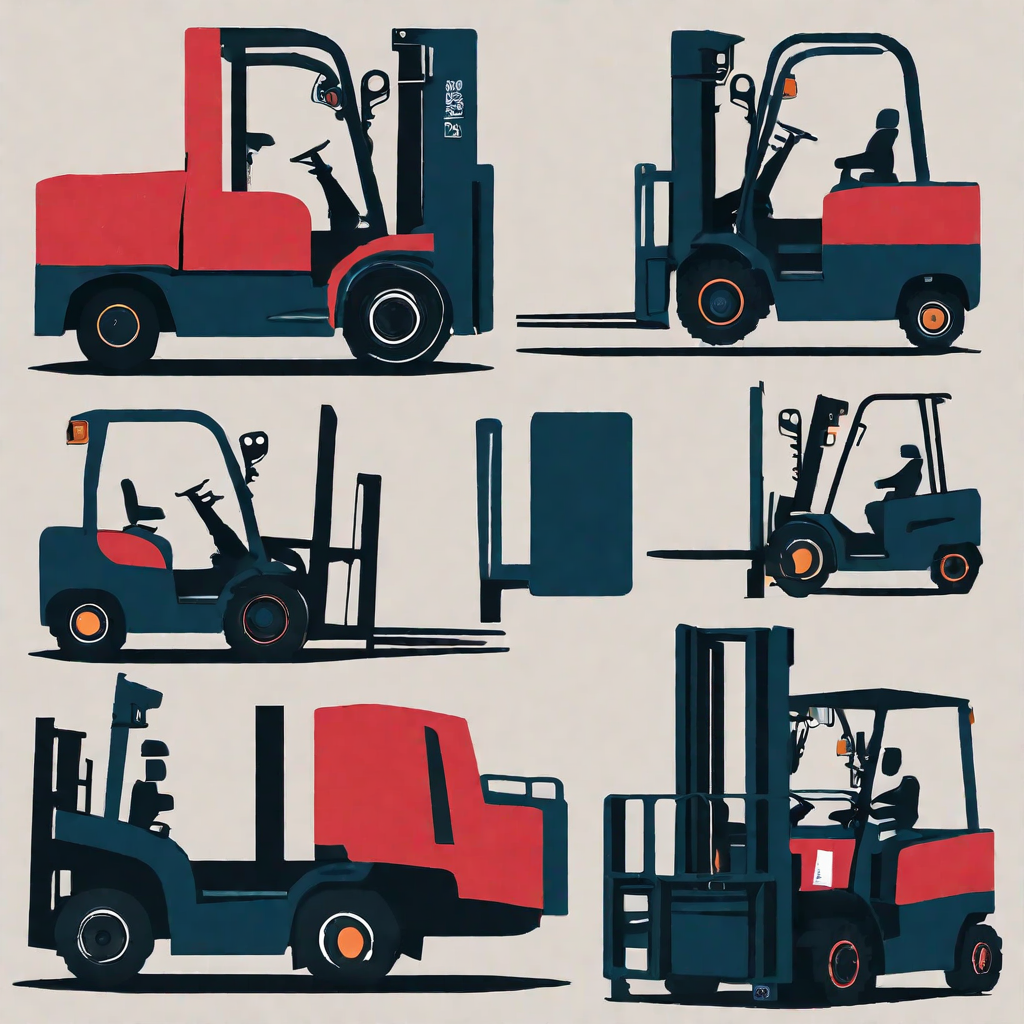
Introduction to Forklift Truck
Forklift truck is versatile industrial vehicles used for lifting and transporting various types of materials and cargo. They provide an efficient and safe method for moving heavy loads without requiring manual lifting. This article explores the key aspects of forklift trucks, Also, including their uses, types, components, safety considerations, and regulations.
In this article, we will delve into the working mechanism and various applications of forklift trucks. Forklifts are indispensable industrial vehicles used for lifting and moving heavy loads in warehouses and other large storage facilities. They come in different types and are powered by either electric batteries or combustion engines.
What is a Forklift Truck?
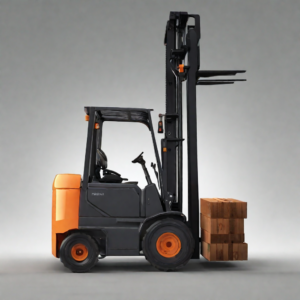

A forklift truck, also simply called a forklift, is a powered industrial vehicle used to lift and move materials short distances. It consists of a powered chassis with a mast extending upward from the front. Attached to the mast are two metal prongs called forks that are inserted under the load being lifted. The rear of the chassis has a counterweight to balance the load being carried at the front.
Forklifts come in a variety of sizes and configurations depending on their intended uses and load capacities. Also, Their power sources include electric batteries or internal combustion engines running on fuels like gasoline, propane, or diesel. Forklifts have dramatically improved workflow efficiency and worker safety across many industries that involve frequent materials handling.
Chapter 1: Forklift Working Mechanism
1.1 Key Components of a Forklift:
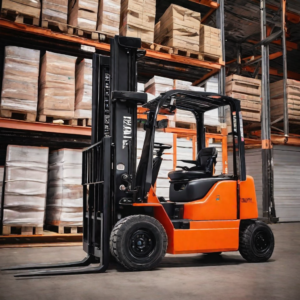
Truck Frame: The base of the forklift truck to which all key components are attached.
Counterweight: A cast iron weight at the rear of the forklift that balances the load being lifted.
Power Source: Either an internal combustion engine fueled by LPG, CNG, diesel, or natural gas, or electric forklifts powered by fuel cells or lead-acid batteries.
Carriage: The base of the forklift that moves upward and downward.
Mast: The vertical part that lifts and lowers the loads, equipped with interlocking rails and rollers.
1.2 Lifting Mechanism:
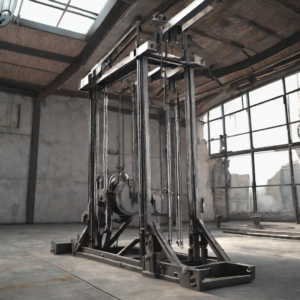

Forklifts derive their lifting power from two main mechanisms:
Hydraulic Cylinders: Also, These cylinders use air pressure to generate an upward force, allowing the forklift to lift loads.
Roller Chain Pulleys: These pulleys, attached to the masts, enable the forks to move upward by rotating gears and chains.
1.3 Controls:
Forklifts have two sets of controls:
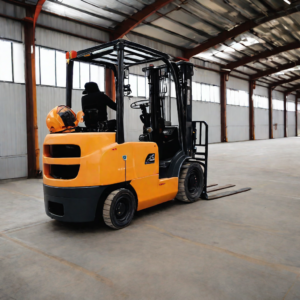
Steering Control: Similar to a golf cart, it includes an acceleration pedal, steering wheel, brake, reverse gear, and forward gear. Forklifts use rear-wheel steering for better maneuverability.
Lifting Control: Consists of levers for lifting the forks up and down and tilting the load back and forth. Also, Hydraulic cylinders are used for lifting, while additional cylinders are employed for tilting.
Chapter 2: Applications of Forklift Trucks
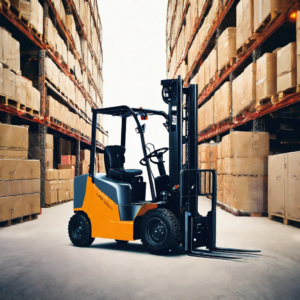

2.1 Construction Sites:
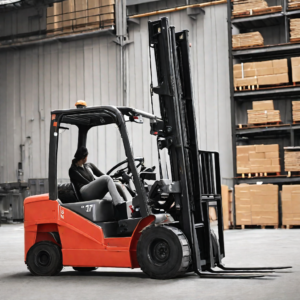
Forklifts are essential at construction sites for transporting heavy building materials across rough terrains. They can unload pallets of bricks, and construction materials, Also, as steel joists from delivery trucks, and transport them to the job site.
2.2 Warehouses:
Forklifts are commonly used in warehouses for loading and unloading trucks and carrying goods. They come in various sizes and capacities, from one-ton capacity for general warehouse work to 50-ton capacity for shipping container operations. Also, Forklift operators can lift, lower, and shift loads using side shifters and tilt the mast to prevent load sliding.
2.3 Recycling Operations:
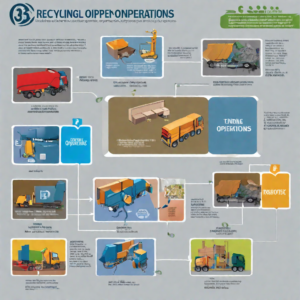
Forklifts play a crucial role in recycling operations by unloading recycling trucks or containers and transporting the contents to sorting bays. They can efficiently load and unload various types of vehicles and use cage attachments for transporting materials like tires.
2.4 Dockyards:
Forklift trucks are used for stacking and unloading ships and barges in dockyards. Also, They are also employed for transporting bulky containers from delivery trucks to dockside storage areas and then onto ships. Forklifts are instrumental in handling shipments of wood and steel in dockyard operations.
Types of Forklift Trucks
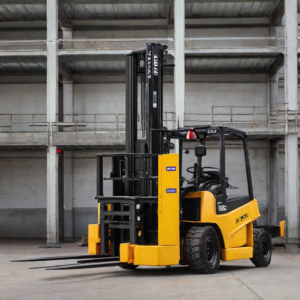
There are several common types of forklifts differentiated by their features and intended applications:
– Counterbalance forklift: One of the most common types with a sit-down operator position. Used for general lifting and transport on smooth, level surfaces.
– Reach forklift: Features an extendable horizontal arm to lift loads on high racks or shelves. Effective for narrow aisle applications.
– Rough terrain forklift: Heavy-duty variations with large tires for outdoor and unstable terrain use cases.
– Electric forklift: Battery-powered for indoor applications where emissions are a concern.
– Gas/diesel forklift: Internal combustion engine models suitable for intensive outdoor use or long shift durations.
– Articulating forklift: Also, Allows the mast and forks to turn and maneuver in tight spaces like loading docks.
– Very narrow aisle forklift: Specialized forks that retract or swing to maximize space utilization.
Forklift Components
Also, All forklifts share some common components that allow them to function properly. These include:
- – Mast: Vertical beam that raises and lowers the forks via hydraulic cylinders.
- – Forks: Horizontal tines inserted under pallets or loads for lifting and transport.
- – Carriage: Platform that carries the forks up and down the mast.
- – Counterweight: Balances the load at the rear of the chassis.
- – Chassis: The metal frame that forms the base and includes wheels.
- – Power source: Battery, gasoline/propane tank, or diesel fuel tank.
- – Controls: Steering wheel or levers to operate lift, tilt, and drive functions.
Forklift Safety Considerations
Also, Forklift operation requires specialized training due to the safety hazards involved. Some important safety measures include:
- – Only certified operators use approved lifting capacities.
- – Load security – Ensure cargo cannot shift or fall during transport.
- – Visibility – Maintain three points of contact and look both ways before maneuvering.
- – Travel paths – Clearly mark pedestrian zones and separate them from lift truck traffic.
- – Prevent falls – Never allow passengers and stay within the protective cage.
- – Refuel safely – Shut down the engine and no open flames during refueling of gas forklifts.
- – Inspections – Perform daily pre-operation checks and report any issues promptly.
Following proper protocols and only using forklifts for their intended functions helps minimize the risk of injuries or accidents. Also, Employers must also maintain compliance with regulations from authorities like OSHA.
Forklift Applications
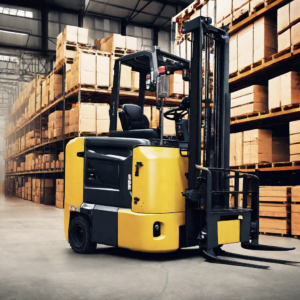
The lift capacity and maneuverability of forklifts Also, make them crucial equipment across many industries including:
- – Warehousing/distribution: Transporting pallets between storage racks and truck bays.
- – Manufacturing: Moving raw materials, finished goods, supplies and components.
- – Construction: On-site lifting and moving of building products and supplies.
- – Agriculture: Forklifts help move hay bales, animal feed, and other heavy farm items.
- – Ports/intermodal transport: Loading and unloading ships and rail cars.
- – Retail: Replenishing store shelves and moving inventory in stockrooms.
With careful operator training and diligent safety practices, forklifts continue to save businesses time and money while protecting workers from injury risks associated with manual lifting. Also, Their versatility has made them indispensable in diverse material handling

